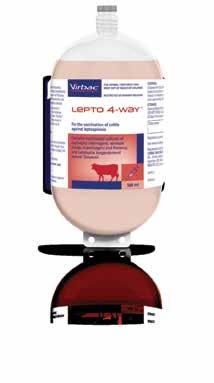
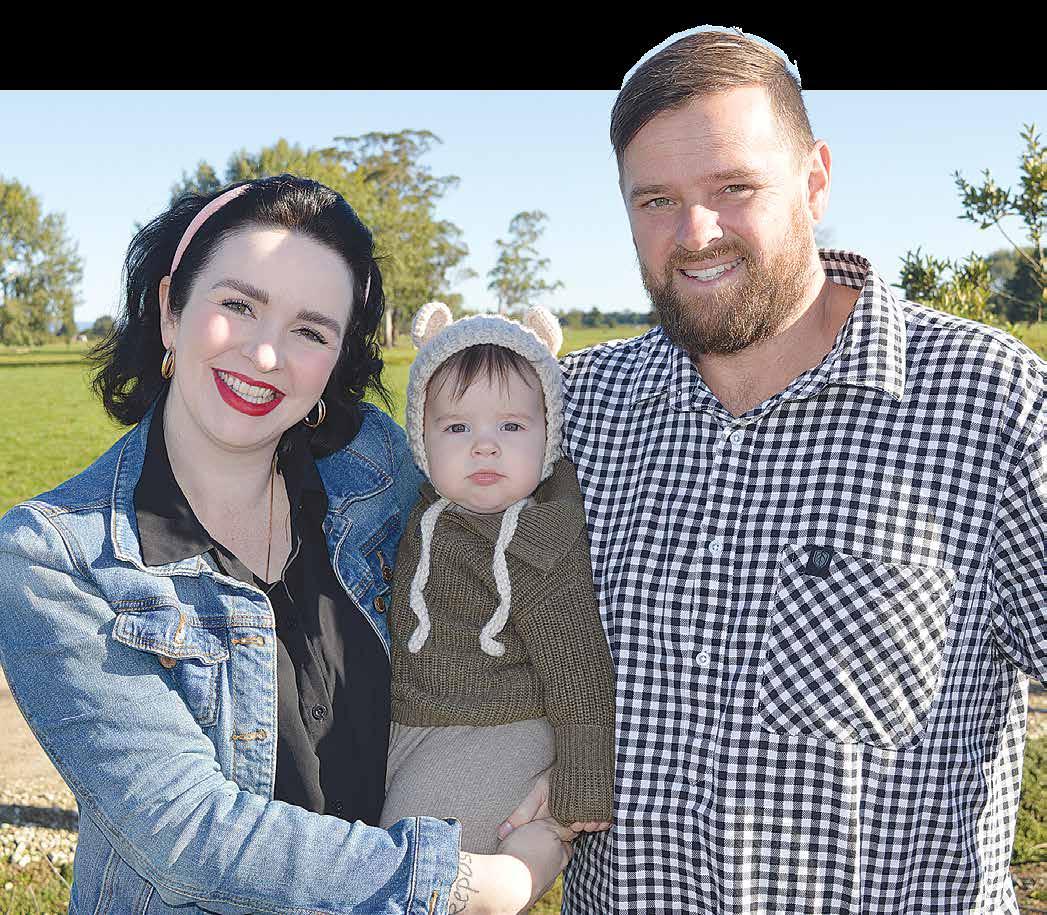





Waikato share farmers of the year Logan and Sian Dawson’s children are super proud of their achievements. PAGE 5

Don’t

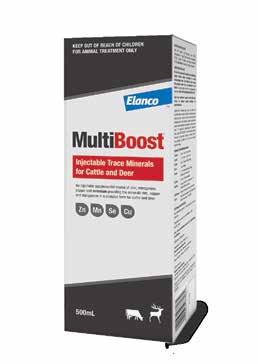


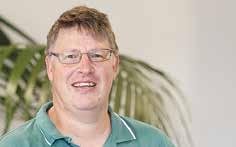


BOUTIQUE CHEESEMAKERS in New Zealand are being forced out of business by several factors, including higher input costs and cheaper imports from the European Union.
And the recent ratification of a free trade deal (FTA) with the European Union by the New Zealand Parliament is expected to allow more cheap EU cheese imports to flood the domestic market.
New Zealand cheesemakers are urging consumers to buy local and help them stay in business.
NZ Specialty Cheese Association chair Simon Lamb told Dairy News that he knows of four cheese companies that have folded in the last 12 months.
Lamb says while there are a myriad of factors affecting the local cheese sector, cheaper imports from the EU is certainly having an effect.
Lamb points out that over the last five years cheese manufacturing in the EU has changed. Whey, a by-product of the manufacturing of cheese is now considered more valuable than cheese. This has led to the manufacture of large quantity of inferior cheese to access whey.
With Covid restrictions over and freight charges stabilising, it appears that more of these cheaper cheeses are finding their way into markets like New Zealand.
Lamb says these cheeses are competing with locally made cheese and creating false expectation from customers.
“For example, for goat milk
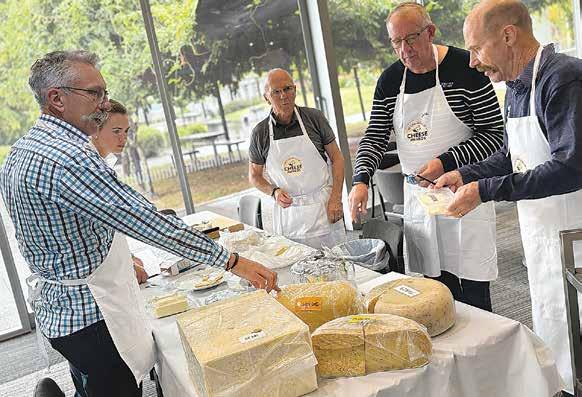
cheese makers in NZ, just accessing raw milk is costing them $20/ kg. We see these EU cheeses coming in at $30 to $40/kg.
“High input costs like increase in logistics and insurance costs, are pushing margins tighter for smaller operators, who can only increase the price so high before they are forced out of business. And this has started happening.”
He says in the current economic climate supermarkets are also looking closely at their suppliers and small cheesemakers are being priced out. This is also adding pressure on cheesemakers. The association has made submissions to the parliamentary select committee on foreign affairs, defence and trade but isn’t
banking on a lot of support from politicians on the EU trade deal.
“We did make our thoughts very clear to the committee, but the bigger picture is that there’s a lot tied to the deal,” says Lamb.
“We will continue to lobby Ministry for Primary Industries and the Government on this issue.”
However, Lamb says for his members the best way to compete with imported cheeses is to keep producing “just as good if not better cheeses”.
“The challenge is to prove to consumers that the brie from France may be cheap, but my brie is much better.”
Last week, the NZSCA awarded 187 medals in the prestigious New
Zealand Champions of Cheese Awards.
Master Judge Jason Tarrant guided thirty judges through an evaluation of 253 NZ-made cheeses. Tarrant said the intense judgement affirmed the exceptional quality of locally made cheese.
Lamb says while the number of entrants was nearly the same as previous years, the quality of cheeses entered this year was better than previous years. He says NZ cheeses have also done well on the international stage in the past few years.
“As a small cheesemaking group, NZ is punching well above its weight globally,” he says.
“If we don’t protect our cheesemakers, then we will lose them.”
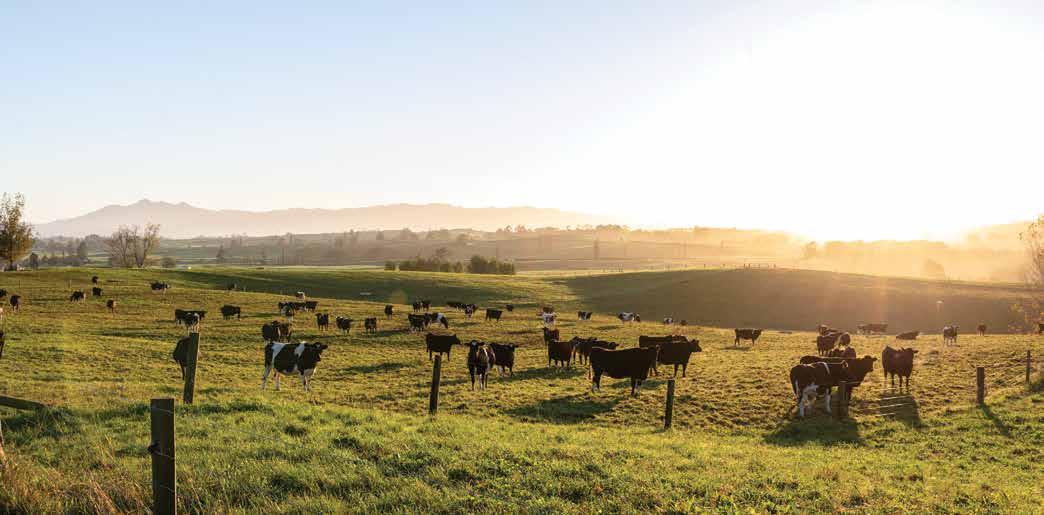
SAFER FARMS, the organisation dedicated to recognising the benefits of on-farm health and safety, is on a mission to reframe psychosocial harm.
The membership organisation, which launched its Farm Without Harm strategy in 2023, is chaired by farmer Lindy Nelson who says the organisation is trying to bring farmers into the conversation around safety.
The important thing to remember, Nelson says, is that psychosocial hazards and mental health are two different things.
She says psychosocial harm is “the stuff that we do where we work or our in work environment that contribute to poorer mental health and also, often, poorer physical health outcomes”.
These psychosocial hazards can include a high workload, unsocial
“If a father and son are working together, if a husband and wife are working together, and the culture at work isn’t right, then it spills over into the family environment.”
working hours, remote and isolated work, and the under-utilisation of skills and experience, among other factors.
“Those are the sorts of things that we’re trying to get people to focus on,” Nelson told Dairy News
She says that organisations like Farmstrong have done good work to talk about mental unwellness and mental illnesses.
“Our job now is to talk about the impact of work
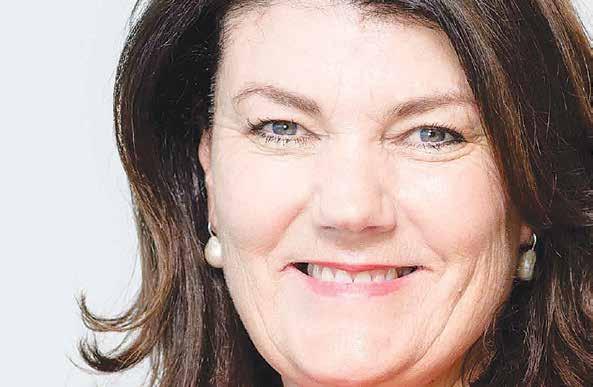
on those, understanding that farming is incredibly unique mostly in that there isn’t a big differentiation between work and home.
“So, whereas if I went to work in town and I caught a train and I came home, I’d be in a different district, I probably wouldn’t see my work colleagues, I probably wouldn’t be going round
to my boss’s house for dinner, I’d be separate from where the harm is,” Nelson explains.
She says that onfarm, the environment is blurred in that there is not much in the way to separate farmers and farm workers living on farm from their work.
“If I’m a dairy worker and my house is actually next to the shed, how do
I even make that break?”
Nelson says this blurring between work and home is one of the things that needs to be understood in the discussion surrounding psychosocial harm on-farm.
“There is very much a blurredness between work and home and who we work with,” she says.
Nelson says another factor that makes farm-
ing a unique industry in terms of workplace mental safety is that oftentimes family relationships can come into play.
“If a father and son are working together, if a husband and wife are working together, and the culture at work isn’t right, then it spills over into the family environment.”
REGISTRATIONS FOR South Island Dairy Event (SIDE) 2024 are now open.
The highly anticipated SIDE is back for its 25th year, bringing together farmers from across the South Island for a two-day conference filled with valuable workshops and expert speakers. This year’s event will take place at Lincoln University, Canterbury from June 24th to June 26th, offering attendees the opportunity to gain insight into cutting-edge research and network with like-minded individuals.
“This is an event like no other,” said Jonny Hoets, event chair of SIDE 2024.
“It’s not just about learning new strategies or techniques; it’s about embracing change and excelling through challenges.”
The programme includes a lineup of workshop topics that address key issues facing South Island dairy farmers today. With keynote speakers including ex Australian SAS medic Dan Pronk, Fonterra’s chief science & technology officer Jeremy Hill, and
Hemprino and Meat the Need founder Siobhan O’Malley on board, attendees can expect to be inspired by industry leaders who are paving the way for success in their industries.
“We believe that empowering dairy farmers is crucial to creating positive opportunities for growth,” said Hoets.
“By attending SIDE 2024, participants will have the chance to learn how to improve their businesses while adapting to changing consumer demands and regulatory requirements.”
In addition to informative workshops and expert presentations, attendees can opt in to visiting Lincoln University’s research farms on Monday, June 24th. This field trip will provide a firsthand look at the latest research programs being conducted at Ashley Dean and Lincoln University Research Dairy Farm (LURDF), offering valuable insights into innovative practices that could benefit their own operations.
BrightSIDE is also back and this year participants will kick off their
Nelson says there isn’t a one-size-fits-all, prescriptive method that works to manage psychosocial harm on-farm.
She says that while there are “absolute practical things” that can be done like ensuring workers are getting good rest, fostering good working relationships are “huge”.
“A farm culture where relationships thrive is critical because if you don’t have that… if you don’t have all those trusted systems, you won’t fix psychosocial harm, you won’t get workers who are able to say to you ‘you’ve overworked me, there’s too much stress here’, you can’t have those conversations.”
Nelson says that on her farm, what has worked is a weekly meal with her farm workers.
“So, that’s really about checking in, it’s building a foundation so that then I notice where they are in their mood, but it’s also a safe space so you can have those harder conversations around safety.”
day by joining the main SIDE event at Lincoln University in the morning before heading to Ashley Dene, one of Lincoln University’s research farms. Here they will rotate through various workshops focusing on different aspects of farming, such as hoof trimming, pasture management, and calving and production.
For more information or to register for SIDE 2024 visit https://www. side.org.nz/Event-Details
@dairy_news
facebook.com/dairynews
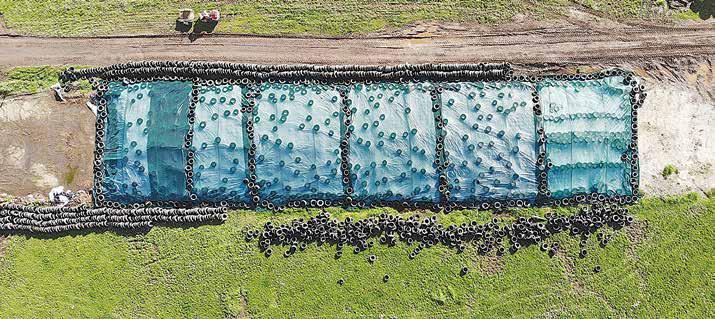


WAIKATO’S TOP share farmers of the year, Logan and Sian Dawson, are chuffed to see their kids so proud of their achievement.
With four boys and a daughter, the Dawsons have made a point to be role model farmers for the children. More so after Logan’s brush with the law as a young man, when he made a poor decision while pig-hunting.
Now the 36-year-old dairy farmer has elevated animal welfare to the forefront of his business at Ngahinapouri where he milks 1300 cows, employs six staff and supplies 700,000 kgMS to Fonterra as an equity partner in the 50/50 sharemilking business operated on Jim and Sue van der Poel’s 333ha farm.
He declared the historic charges when entering the awards and believes it benefits everyone to value the animals that farmers have the privilege of caring for.

ONE OF the biggest challenges the couple have faced was the 2016 milk payout, which plummeted to $4.30/kgMS.
“It changed the way we now structure our business, the way we operate with minimising expenses, personal drawings and revolutionised our risk assessment and decision-making process,” says Logan.
The rise in input costs and interest rates over the past two seasons have also prompted the couple to minimise costs and keep their business profitable.
They are proud they have achieved a large-scale sharemilking equity partnership and hitting 130% of liveweight in production last year.
The Dawsons identify the strong relationship with their equity partner as a strength of their business along with profitable and proven farm systems.
“Farming is certainly challenging at times but every difficulty is an opportunity for growth.”
He recalls being told as a youngster that “today’s news is tomorrow’s fish and chips paper”. However, social media means when his kids Google their dad’s name, the old charges of ill-treating pigs appear.
Logan told Dairy News that he was stoked and proud to have turned a page by winning the regional title. He will now compete for the national title with other regional winners in Queenstown in May.
“We put some much effort into this and to see our kids super proud of our achievement is a great feeling.
“Just over a decade ago, when I was in my early twenties, I found
myself on the receiving end of animal cruelty charges and immediately took full responsibility for my actions,” he says.
“I am so sorry and have used the experience as an opportunity for personal growth and I lead our team to diligently display best animal welfare practices.”
Logan says he is acutely aware of how important it is to not only surround his family with genuine wholesome people, but to be that person for those around them as well.
“I wanted my kids to find something pos-
itive about me when googling and I’ve spent the past decade trying to be the best role model I can be for them and my team. My desire is to be the best example to my legacy that I can be.”
Logan hopes that taking part in the awards will redefine him or at least balance out the past and prove that “you can turn your life around”.
“I have been able to start breeding a herd of my own, something I’m very passionate about, and have worked my way up to an equity partnership sharemilking job that is incredibly fulfilling.”
Logan and Sian believe the awards programme has pushed them out of their comfort zone, but they enjoyed the challenge and have grown a lot through the process.
Logan is a third generation farmer who grew up on the family dairy farm and has been farming since leaving high school.
“I’ve worked my way up from farm assistant to herd manager, 2IC, then lower-order sharemilking which led to larger scale contract milking that’s allowed us to grow into our current equity partner sharemilking role.”
Logan has achieved
The OzoneNZ 10G Dairy Teat Spray Ozone generator is custom designed to integrate with most automatic teat spray systems in farm dairy.
The Ozone generator mixes ozonated water at pre-set levels, so post-milking udder treatment is consistent, monitored, and uses no consumables apart from water.
Ozone is nature’s oxidiser and kills 99% of pathogens and bacteria on contact.
• NO chemical operating costs and reduced chemical imprint on your dairy farm
Reduce mastitis incidence and improve cow udder health
Pre-set ozone output levels, online monitor for consistent treatment
• Adjustable output pressure, depending on individual automatic spray system
Waterproof ozone generator with 304 stainless steel fuselage for long life
Call now, or visit our website for further information.
NZ Certificate in Agriculture Levels 2, 3 and 4, NZ Certificate in Production Management Level 5 and NZ Certificate in Agribusiness Management Level 5. Sian, 36, had a very different upbringing, raised as a city girl in Sydney.
“I’ve been a photographer for the last 10 years and am kept very busy raising our five children.”
The couple enjoy the variety of physical and mental work that farming gives them and the connection with their animals and the land.
“We get to feed the
world and live an honest and wholesome life at the same time.”
The couple look forward to watching technology advancing and new ideas being tested to increase efficiency as well as reduce environmental impact.
The New Zealand Dairy Industry Awards are supported by national sponsors CowManager, DeLaval, Ecolab, Federated Farmers, Fonterra, Honda, LIC, Meridian, Ravensdown, and Trelleborg, along with industry partners DairyNZ, MediaWorks and Rural Training Solutions NZ.

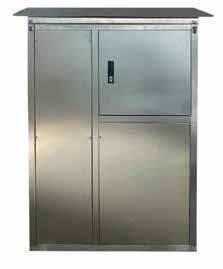
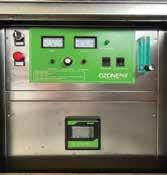
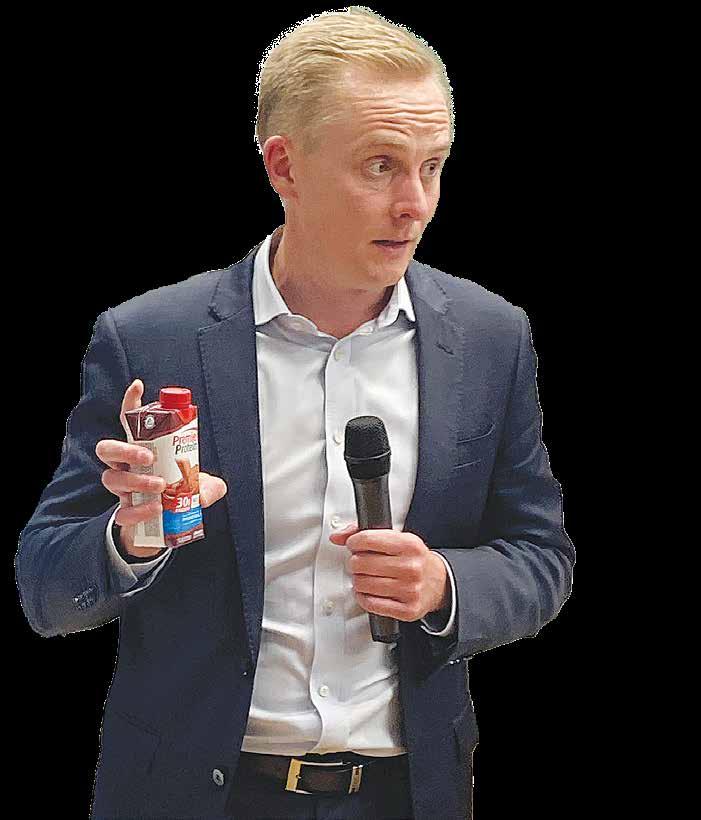
FONTERRA’S ATLANTIC region, formed in August 2022, includes the Americas – North, Central and South – and Europe. Allen, a former head of Farm Source, took up his role last year.
For Richard Allen, the US is a fantastic demonstration of Fonterra’s strategy in action – New Zealand milk, sustainability, and innovation.
“The US business has delivered a strong performance in recent years, and the US economy has been remarkably resilient. Market demand for value-added ingredients has held up well and we are seeing this play out through strong demand for our low-carbon
and protein snacks. Fonterra provides ingredients into all three categories. The high protein snack bar category is growing significantly, reaching US$2.8 billion retail value
Allen says the market for protein powder continues to present strong growth opportunities for Fonterra. The market value for protein powder in the US is expected to reach US$9.7 billion by
“Fonterra’s protein portfolio is well-positioned to meet key customer needs underlying these trends because of its ability to deliver high protein, functionality to meet manufacturing requirements and the right sensorial experience, and sustainability profile aligned with
customer environmental goals.
“We are really leveraging the hard work that our farmers have put in, to position them as the most sustainable source of dairy globally.
“Market demand for value-added ingredients has held up well and we are seeing this play out through strong demand for our low-carbon dairy.”
He says Fonterra’s investment in research and development was paying off for the company.
“We’ve led the world in terms of some of the R&D and innovation over a number of years. And we’re the preferred supplier of many of these large global multinational food businesses.”
Allen believes the market for protein has

evolved from being mostly for weightlifters and athletes to one where there is a demand for everyday applications of protein other than drinking a shake after working out.
One of most popular of these applications is healthy snacking.
“A decade ago, high protein snacks generally did not taste great, but the R&D work done around the products mean consumers no longer had to sacrifice an eating experience to get that nutrition,” he adds.
The indulgence category is another growing area, with high protein cookies and other confectionery becoming more popular.
“The wonderful thing with this trend is that in New Zealand we manufacture a significant amount of protein.
“The two main products we make are milk protein concentrate and a whey protein and they are usually in high concentrations of protein.
“Years of innovation into these products mean we can get that protein in without sacrificing the eating of the product and the flavour of the product. You no longer feel like you’re eating cardboard.”
port, skills and knowledge to another team member to get the job done has resulted in an awesome team.”
FOR THE team at Westmorland Estate Limited in Waikato, it has been another year of everyone working together to achieve impressive results.
Owners David and Sue Fish say the team of 13 have helped their three dairy farms again surpass targets.
“It has been another year where the team has worked collectively together to achieve impressive results on farm,” David and Sue Fish told Dairy News.
“We also as a team have overcome many challenges at the busiest times of year when others have let us down. The willingness of everyone in the team to offer to sup-
The ethos of teamwork is important for Westmorland Estate. ‘Together we succeed’ is their motto.
They say the first thing is to recognise that individual people are fantastic with many different skills and talents.
“By creating a team of people in an environment that allows them to contribute to a common goal, in our case quality milk, then they can only succeed. ‘Together we succeed’ has been our motto from day one when we were only a team of two,” they say.
David and Sue make sure that they provide a good work/life balance for the team.
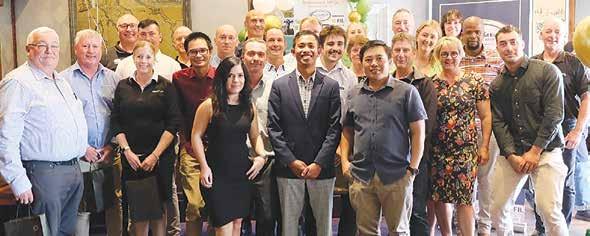
They point out that the statistics for people dying on farm and leaving the dairy industry are not good.
It is something that the industry should consider very seriously.
“Providing a safe, supportive work environment with a shorter working week with regular meal breaks is very important to us. We want the team to be well rested
and engaged when they come to work.”
Westmorland Estate holds an annual awards day, where team members are recognised for their efforts. Like every year, the 2024 awards day was supported by companies involved with Westmorland Estate: FIL, GEA, Vet Clinic Morrinsville, Rabobank, Fonterra, LIC, PGG Wrightson, DairyNZ, Donaghys
and Bridges Insurance. Teams, named after each of the three farms, took away prizes and goodies donated by these companies.
David says the awards event is crucial to helping keep the team together and keeping morale high.
“This is the pinnacle of our farming year where we celebrate the hard work of the team and
their achievements on farm; we take the time to celebrate by taking time off the farm to enjoy each other’s company and eat some delicious food.
“We also invite other businesses who support the team and the business with services and products. They offer sponsorship in the way of merchandise for the individual farm awards.
“It is an event where
we go that extra mile to make people feel special and for them to recognise that what they do on a daily basis contributes so much to a wider group of people: it’s a way for us to say thank you.”
The awards are organised annually by Westmorland Estate human resources manager Paola Verrycken.
This year the best cows award went to Sandhurst Team; Dries Verrycken, Ievgenii Dushkevych, Brian Garcia, Samukelo Sosibo, Barbara Hilton and Aubrey Fish. The team also took out the best calves award.
The empty rate award went to Somerset team. Dries Verrycken, Emilio Ayerdi, Sue Fish, Yurii Kokhanevych. The somatic cell count and farm pride awards also went to Sandhurst.



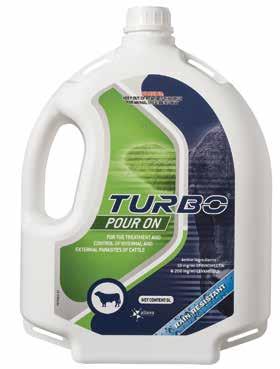
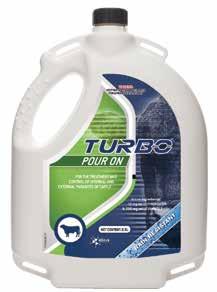
WITH ONLY about eight weeks to go before their cows are dried off, the 2024 Manawatu Dairy Industry Awards Share Farmers of the Year, Will Hinton and Kali Rangiawha are well on the way to their 140,000 kgMS production target.
Milking 340 cross-bred cows, currently made up of around one third heifers, the couple operate on a 113ha effective platform, complemented by an adjacent 60ha run-off block.
Located at Halcombe, north of Feilding, the property is owned by Tim and Victoria Gorton. Tim and Kali relocated to the Manawatu for the 202324 season after contract milking in the Waikato region at four locations over the past four seasons.
Will grew up in the UK, then after agricultural college and university, headed to New Zealand in 2014, where he met Kali. Returning to the UK, after six months the couple realised that their farming careers would have much greater potential in New Zealand. Their move to the Waikato saw Kali running the day-to-day operations on the farm, with Will


working part-time on pasture and feeding plans,
with time away from the property working in the consultancy space with Farmright and Rabobank.
As is often the case, the saying “if you want something done-give the job to a busy person” played out in the case of Kali, who juggled life on the farm, family life with three young children and operated as an LIC technician for the last six seasons.
forced by weekly farm walks to collect, record and review farm data, making informed decisions, sticking to round lengths and adjusting where needed, alongside hitting key targets throughout the season.
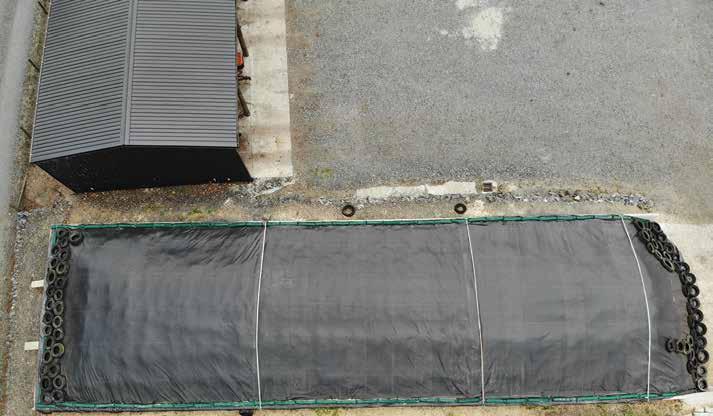
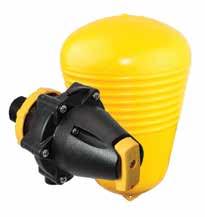

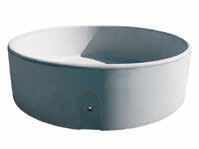


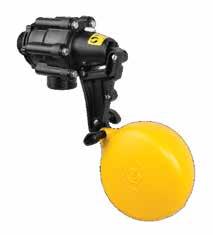
Kali’s work ethic is summed up in a comment: “I was courageous and got back to work after having each of the children”. The couple go on to say, “Our vision is to provide a long-term sustainable business for our kids, while at the same time ensuring we have a strong work/life balance”.
Much of the couple’s success is built around attention to detail, which in Will’s case has seen him create a budgeting tool, from his time working in consultancy, that helps the business review opportunities, while also identifying profitability and highlighting any gaps that will hinder success. The tool provides a projected cashflow that the couple adheres to, alongside an annual budget that is reviewed regularly.
Looking at the Halcombe operation in more detail, Will and Kali are committed to remaining disciplined, while also being flexible enough to adjust projected plans as the season progresses.
This discipline is rein-
Typically this might be an average pasture cover on June 1st of 2400kg DM/ha, strategic nitrogen applications and irrigation use, with further focus on higher in calf rates and a reduction in empties.
Feed utilisation is driven around average pasture growth across the platform of 12 tonnes DM/ha, rising to 14.5 tonnes/ha on the irrigated ground. Chicory is used to cater for dry spells, with 10ha delivering about 11 tonnes/ha.
This season imported supplements have included 264 tonnes DM of maize silage, 48 tonnes of PKE and 45 of grass silage, of which two thirds was made off the platform, and 100 bales of ryegrass straw. The cumulative total saw 2071 tonnes DM utilised, based on 80% home grown and 20% imported.
Looking to the future, the industrious duo are looking to head to 50:50 sharemilking, with 400 to 500 cows, purchasing some real estate to provide some security offfarm and over the next decade purchase a 400 to 500 cow farm, operating on low inputs, and at some point, if time allows, get married.


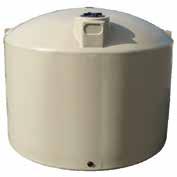
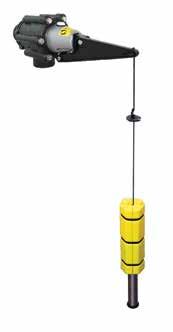
founder Dr Jeremy Bryant says the company’s app is designed to be a farmer’s “true digital assistant” when it comes to pasture management.
From April 1, the startup’s AI-powered pasture management tool will be partnering with Farm Source
The app came about in 2021 and was commercialised last year after launching at National Fieldays.
“I just really wanted a tool that was easy to use and that actually gave them [farmers] insights
and foresights rather than some plans going forward, some recommendations, and really acted like a true digital assistant rather than a dashboard,” Bryant told Dairy News.
From there, Bryant, a data scientist, dairy farmer, and AIMER Farming’s chief technology officer, built the app, working with farmers to develop it, ensuring that it worked for them.
He says people are very short of time and often resources, with staff shortages, so the app –which he calls a “digital coach” – is able to help and guide them.
“Essentially, the farmers will be entering in

the pasture covers, so that might be them doing their farm walks, their farm rides,” Bryant says. From there, the app itself – “the brains of
the operation” as Bryant calls it – takes the measurements and starts to learn about the paddocks, learning as it goes.
“And then it will anal-
yse the current situation and detect all the different sorts of feed ridges and say ‘hey, I’ve seen a shortage here’, and then provide some recommen-
dations.”
Then farmers will be able to use those recommendations to adjust their pasture management.
Shane Laurich, Fonterra procurement specialist, says AIMER is a great tool for those seeking to improve their pasture management.
“We have been watching this technology come through the innovation pipeline with a lot of interest,” he says.
“Jeremy Bryant, creator of the app, has solid experience and expertise as both a farmer and a scientist and that shines through in the quality of AIMER’s technology,” he adds.
Bryant, for his part, says the partnership with Farm Source is significant.
“They’ve got the reach, they’ve got the connections with the farmers via their digital channels or via their stores,” he told Dairy News.
He also says it makes things easier for farmers because if they sign up for the app through Farm Source, the subscription fee will come off their milk cheque.
Through the partnership, farmers will also receive an 8% discount on their monthly AIMER subscription fee.
“So, it’s very easy for the farmers to come on board,” he says.
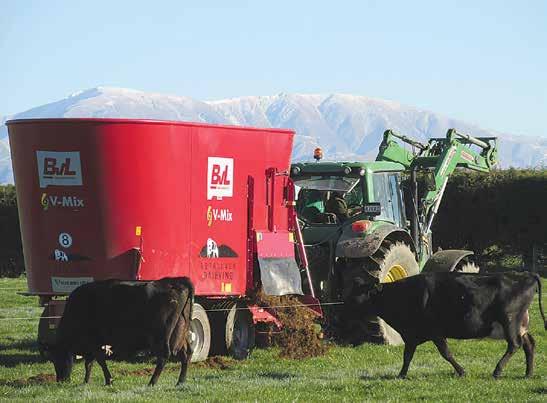
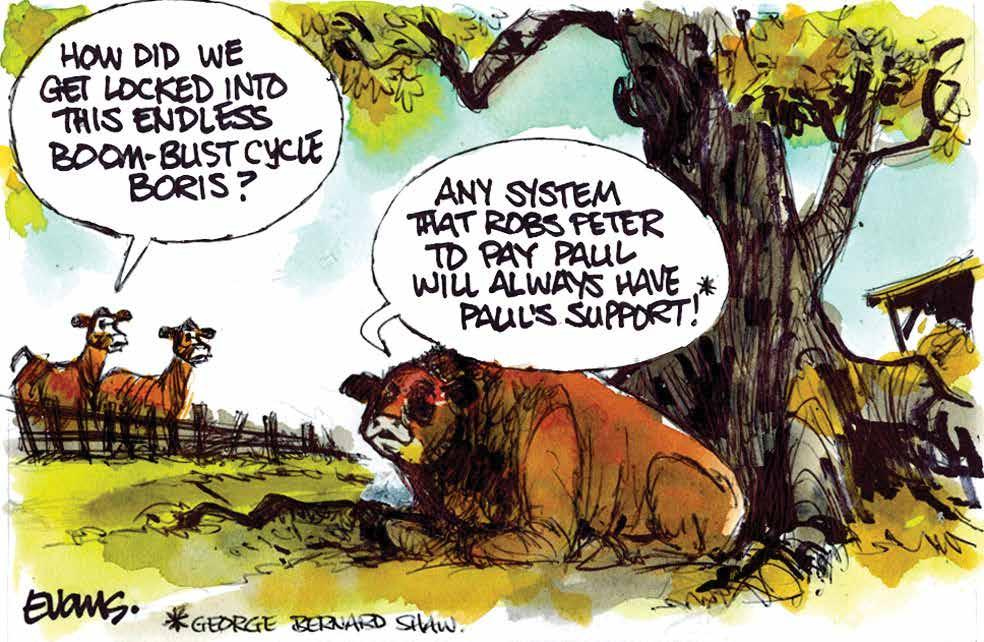
SHOULD THE New Zealand dairy sector be worried?
A report out last week warns that that the dairy sector in New Zealand is more threatened by the development of alternative proteins than our meat producers.
The AgResearch report predicts that greater global demand for plant protein will have economic and environmental benefits for New Zealand, but the economic benefits will be unevenly distributed and the size of our pastoral farming sector is likely to reduce.
For example, in Canterbury, a scenario for 2050 in which demand for all alternative proteins increases 22% has the potential to decrease greenhouse gas emissions by over one-third, and decrease nitrogen loss by almost 15% while increasing economic output 15% with a shift of some intensive dairy to horticulture and arable land use.
The report calls for a national policy or strategy to help New Zealand prepare for the risks and potential opportunities of alternative proteins.
SEEDS OF legume plans are being used to make dairy-free milk products by scientists at Massey University’s Palmerston North labs.
Radio NZ reports that the university is so confident about its technology that it is getting behind a new company that has its eyes on selling to the world.
For the past four years, scientists at Massey’s Riddet Institute have worked away at a fermentation process to extract plant-based milk from the seeds of legumes.
They have developed dairy-free creams and milk powders, and the university, through Massey Ventures, was a large shareholder of new company Andfoods, that has raised $2.7 million to get itself off the ground. A chunk of that was from Icehouse Ventures, a New Zealand venture capital firm.
LAST WEEK’S revelation that data relating to New Zealand MPs was stolen amid Chinese state-sponsored cyber espionage targeting two arms of the country’s Parliament could test the long-standing trade relations between the two countries.
NZ was the first country to sign a free trade deal with China in 2008 and our primary sector, particularly dairy, has benefited greatly. A big chunk of Fonterra’s earnings come from sales in Greater China.
Foreign Minister Winston Peters confirmed New Zealand’s concerns about cyber activity have been conveyed directly to the Chinese Government.
“Foreign interference of this nature is unacceptable, and we have urged China to refrain from such activity in future,” he says.
A few years ago, when the Australian Government publicly accused China of spying, retaliatory bans on wine, grain and wheat were slapped by Beijing. Here’s hoping that the Chinese won’t do such a thing to our exports.
A LETHAL form of avian influenza has been confirmed in US dairy cattle in Texas and Kansas, the US Department of Agriculture says.
It is the first time that cows infected with the virus have been identified. The cows appear to have been infected by wild birds, and dead birds were reported on some farms, the agency said.
The Texas Animal Health Commission confirmed that the influenza subtype known as H5N1 has been identified and said that the virus resembled the version that has been spreading in birds across the nation.
Pasteurisation should inactivate the flu virus, experts said, and officials stressed that the milk supply was safe.
DAIRYNZ’S LATEST forecast data on the Econ Tracker, that the outlook for the current season has improved, will be welcome news for farmers.
Only six months ago, the outlook was dire for many farms, with soaring input costs and a very average milk payout.
In recent months, dairy prices on Global Dairy Trade have risen, although the last two GDT events have seen prices retreat slightly.
DairyNZ says revenue projections have improved largely due to better results at the global dairy auction, along with Fonterra’s adjusted projected payout for the season, now sitting at a mid-point of $7.80/kgMS.
The Econ Tracker notes significant price decreases for feed and fertiliser, bringing these more in line with historical averages, reducing on-farm costs.
But interest rates remain high, becoming one of the most significant costs for farmers this season. The Reserve Bank signalled slowed reductions to the official cash rate, meaning interest rates are now likely to reduce more slowly and later than previously expected, which will concern farmers, many of whom are on floating rates.
When considering these changes, DairyNZ’s latest forecast data on the Econ Tracker shows the national breakeven forecast currently sits at $7.75/kgMS. This is below DairyNZ’s forecast average payout received of $8.12/kgMS, which is based on the estimated milk receipts for the 2023-24 season and dairy company dividends for all processors.
With less than two months left for the season, farmers will be turning their eyes to the next season and the forecast from Econ Tracker isn’t very good.
The breakeven milk price for the 2024/25 season is forecast to sit at around $7.76/ kgMS, while the forecast payout received is $7.79/kgMS.
The message for farmers is to continue managing their budgets and costs.
Farmers will be hoping for a payout higher than Econ Tracker’s forecast of $7.79/kgMS.
AUCKLAND SALES CONTACT:
Stephen Pollard Ph 021-963 166 stephenp@ruralnews.co.nz
WAIKATO & WELLINGTON SALES CONTACT:
Lisa Wise Ph 027-369 9218 lisaw@ruralnews.co.nz
SOUTH ISLAND SALES REPRESENTATIVE:
Inkwise NZ Ltd
Contacts: Editorial: sudeshk@ruralnews.co.nz
Advertising material: davef@ruralnews.co.nz
Rural News on-line: www.ruralnews.co.nz
Subscriptions: subsrndn@ruralnews.co.nz
• Printed by Inkwise • Distributed by Reachmedia
Kaye Sutherland Ph 021-221 1994 kayes@ruralnews.co.nz
Fonterra released its interim results last month, showing a continuation of the strong earnings performance delivered by the co-op through the 2023 financial year. Here’s what Fonterra chair Peter McBride and chief executive Miles Hurrell said about the results…
THE UNDERLYING performance of our business is in good shape. This result has been driven by improved earnings in our Consumer and Foodservice channels, helping to offset lower returns in our Ingredients channel relative to last year, which benefited from historically high price relativities during FY23.
Our strong earnings put us in a position to pay an interim dividend of 15 cents per share to farmer shareholders and unit holders, up 50% from FY23. We are also pleased to be forecasting an improved 2023/24 Farmgate Milk Price after volatility earlier in the season.
Our midpoint lifted by 30 cents in February to $7.80/kgMS following strengthening demand from the Middle East and Southeast Asia.
As we are now well progressed through the 2023/24 season, we have the confidence to narrow the forecast range to $7.50 – $8.10/kgMS.
Our focus is always on utilising our co-op’s strengths and scale, including our diversification across products, markets and categories, to maximise overall returns to our owners.
This year, we have been able to utilise our strong balance sheet to get more of the Farmgate Milk Price payment to farmers earlier in the season through implementation of our new Advance Rate guideline. We know supporting onfarm cash flow is important to farmers, especially during a time of increasing costs.
On-farm cash flow was further supported by the payment of the $804 million capital return in August, equivalent to 50 cents per share and unit. This followed the divestment of Soprole and delivered on a commitment made by the co-op to return capital to shareholders and unit holders by FY24.
We note the share price impact following the
capital return. Over time we expect the share price will reflect the co-op’s financial performance.
Ultimately, farmers will determine the value of the shares, given farmers can only buy from and sell to each other.
The co-op has given considerable focus to managing owners’ capital, lowering our debt position and shoring up our balance sheet over the last few years.
We are pleased to be in a position where this work is allowing us to provide some financial stability to farmers, as well as allowing us to invest in the upgrades required to sustain and decarbonise our manufacturing assets.
This stability is one of our strengths, with feedback from farmers wanting to join Fonterra showing us that many are seeking the security of a stable co-op.
Our new capital structure has now been in place for one year with some farmers citing the new flexible shareholding options as another reason for their interest in joining or remaining with us. The combination of our strong performance, financial stability and flexible shareholding options mean we now have a waitlist of farmers in some regions who want to be part of the co-op. At the core of our principles is the promise to farmers that their milk will be collected every day and the highest possible return will be sought for that milk.
Right now, we are operating in a period of heightened geopolitical tensions, which is resulting in disruptions to global supply chains and presents the potential for further volatility in global demand.
Farmers can be confident that the co-op is well positioned to navigate through these dynamics thanks to our stable financial position, scale and diversification across markets and cat-
egories, and strong partnerships, such as with global logistics provider, Kotahi.
In terms of the remainder of FY24, we have a positive outlook for dairy demand, which gives us confidence to maintain our forecast earnings guidance for the year of 50-65c/share.
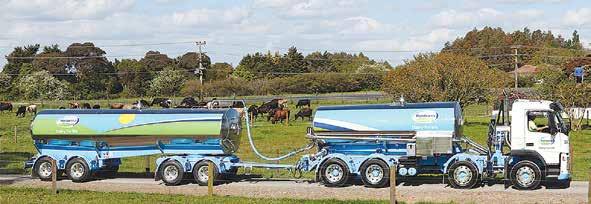
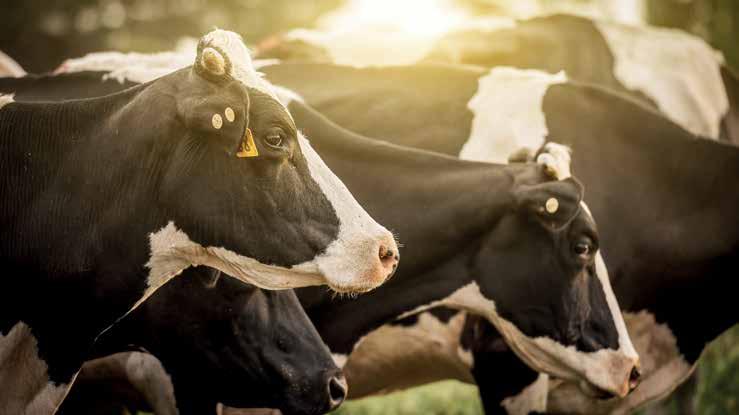

MILKMAP’S SENIOR farm business consultant, Andrew Trounce, says thriving in today’s volatile farming climate is a complicated conversation.
MilkMaP Consulting focuses on ‘milk’, ‘management’ and ‘profitability’, by analysing its clients’ cost structures, and the impact of any proposed feeding or stocking-rate changes.
Its senior consultants have been tracking their clients’ results – throughout the country – for several seasons now. Its 2022-23 end of year (EOY) summaries, include comparisons on all the main income and cost categories, the data breakdowns, the costs, and profit (per hectare, per cow, and per kilogram of MS).

The reports show correlations between key performance criteria,
ANDREW TROUNCE couldn’t fault how their clients responded to the pressure.
“Farmers had a good handle on the boots-on-the-ground stuff – decisions about what to spend money on and what not to.
“If you looked at this last year, guys didn’t necessarily reduce feed when the feed costs went sky-high, which allowed them to hold production later in the season. It shows the importance of getting milk production to dilute their costs.”
He says that’s not to say there hasn’t been a lot of fine management needed within that commentary to keep ahead of the pain.
“It’s come down to attention to detail. Some of our clients have condition scored their herds and perhaps pulled the bottom 10% of lighter cows out and milked them once-a-day [OAD] if need be, which also potentially helped with conception on those cows. Those kinds of decisions have yielded a better result than putting the whole herd on OAD, for example.”
including the two main profit drivers – FWE (farm working expenses), and EBITD/ha (expenses
He says with the value of hindsight, the early warning on milk price ($6.75) hasn’t been all bad.
“Because it meant that people were so early in their season, they were able to alter things – and cut out some unnecessary spends – before it had already been spent.
“Who knows where it will end up, but as the season has gone on, the outlook seems to have improved.”
He says there are still things that can be done to ease things.
“Understanding your key profit drivers is critical. In 2022-2023, 95% of our clients continued to feed grain in the same amounts when the prices were high, because they could see the value of it and they didn’t want to negatively impact production,” Trounce says.
“I will add that it’s important to note that different feeds have a different impact. For example, you can’t replace 1kg of grain with 1kg of palm kernel and expect the same result, just because it’s $20 or $30/tonne cheaper.”
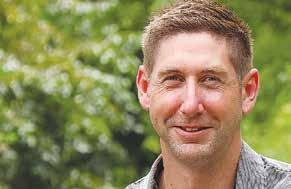
before interest, tax and depreciation).
Trounce says producers have navigated the bumpiest ride they’ve had in the past decade using attention to detail and their key professionals.
He says in the main, their clients had handled the 2022-23 season’s instability well, which included fertiliser costs rising by 16%, administration costs jumping by 21%, and vehicle expenses lifting by 16% (driven by fuel costs).
“It’s been very volatile with a lot of movement within a year, and
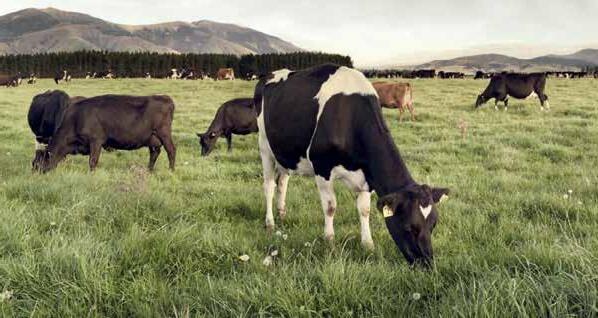
ANDREW TROUNCE says it’s important that dairy farmers keep their fingers on the pulse when it comes to costs for the next two years, given that interest rates appear likely to linger and regulations aren’t easing off.
“What could have been a successful model in the past may not be a successful model moving forward, and that never goes away.”
Trounce says the work that MilkMaP is completing by tracking its clients’ results shows that if cows are working close to (or at) their potential, it will lift production per hectare. That, in turn, means more milk from fewer cows, creating a more efficient system with less per-cow fixed costs.
“The take-home message I’m seeing is that by understanding your costs and knowing your key profit drivers you can deliver the best level of profitability for your farm. It really comes down to how well you run it.”
those collective factors to an overall average fall for MilkMaP’s clients of just 1% in kilograms of MS/ha.
“If we looked at the 2022 spring we were dealt, we couldn’t do much about getting to that peak milk because pasture is still 80-90% of the cows’ diets, so if they were having to deal with poorer quality silage, they’d still find it very hard to mitigate those impacts completely,” Trounce says.
if you looked at the 10 years prior to that things were reasonably static,” he says.
“Normally you talk about that with a sense of the milk price, but not so much when it comes to the operating spend.”
Production per hectare did drop marginally for the third consecutive year – pressed by external factors, such as falling stocking rates (down 3.5% or 0.15 cows/ha), nitrogen limits, consentto-farm regulations, and a cold 2022 spring. However, the end-of-season effort held the impact of
“But from Christmas 2022 onwards, the decline from peak milk was able to be managed well to minimise the damage. The result was down 4kg of MS/cow. That’s pretty good compared to what it could have been. Our clients essentially held that number to what we would usually describe as a general movement from one year to the next.
“Add that to the climate through autumn, winter, and this spring, and nature played ball pretty well. That’s allowed the cows to put weight on, hold pro-
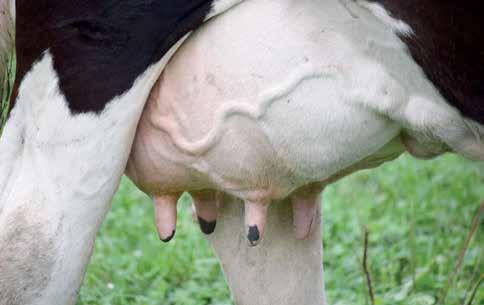
duction at the end of the season, get through winter relatively unscathed, and come into this spring in really good nick.”
For 2020-21 season, FWE/kgMS lifted 2.5%, EBITD/ha 13% and milk price 6.3%. For 2021-22, FWE/kgMS rose 18.3%, EBITD/ha 21.3% and milk price 22.9%. For 202223, FWE/kgMS was up 7.08%, however EBITD/ha was down 18.9% and milk price down 6.6%.
The final numbers coming out of the 202223 season were starting to show the strain of higher interest rates and costs.
“The problem with that is that three years ago the finance cost was half of where it is today –and that’s the other part of the story,” he says. “What was dropping out the bottom was at the same level, but you’ve now got double the spend with interest, while income hasn’t lifted proportionately.
“A big point is that the overall operating costs of our clients went up 7%.”
Every year thousands of cows get unnecessary dry cow therapy antibiotics. Not only is this costly for farmers, but it also takes us one step closer to increased antibiotic resistance.
DairySmarts’ innovative culture-based system ensures the proper identification of cows with bugs in their udders before dry-off, so you can optimise treatment and safeguard your future.
Get DairySmart today.
Talk to us about the latest award-winning way to dry off.
THREE FINALISTS have been named for the Ahuwhenua Young Māori Award for dairy.
They are 29 year-old Ben Purua, farm manager at Waimakariri Lands Ltd, near Tirau in the Waikato, Hannah Speakman, 21, employed as the second-in-charge (2IC) for Woodlands Farming on Pine Hill Dairy farm in Enfield, near Oamaru and Shayden Gardiner, 21, is the assistant farm manager for Ma Taua Dairies, Rylib Group, near Ashburton in mid-Canterbury
The Ahuwhenua Young Māori Farmer Award was inaugurated in 2012 and is designed to recognise up and coming young Māori in the pastoral and horticulture sectors.
Since its inception the competition has proved to be very popular and has attracted high quality entrants, many of whom have gone on to take leadership roles in the agri sector. The three finalists this year were selected from several entrants from around the country.
Purua oversees the
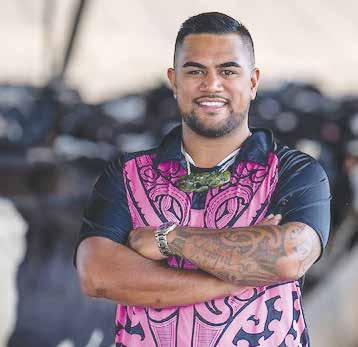
management of the 540 cow, system five dairy farm located near Tirau in the South Waikato for Chap and Ashleigh Zwiers and Jack and Tiz Sheares. He faced adversity in his upbringing in Pukekohe, including exposure to gang life, substance abuse, and domestic violence. This led him on a journey in and out of youth prison and eventually to Waikeria Prison. It was during his time he had an opportunity to work on the prison farms which ignited a newfound passion for farming. This transformative experience provided Purua with a path to positively redirect his life.
Apart from his work and community com-
mitments, Purua and his wife Nikki have introduced their own clothing line called Kāmu tō Pāmu (meaning ‘calm your farm’), aiming to advocate for well-being and positivity.
Hannah Speakman spent her childhood in Elsthorpe, Hawke’s Bay on Edenham – a sheep and beef farm, which was managed by her dad, John.
It was there where her passion for whenua and livestock began and after the Covid pandemic she decided to pursue a career in farming.
Hannah began working for the Rowlands family as farm assistant on their 560-cow farm near Oamaru in
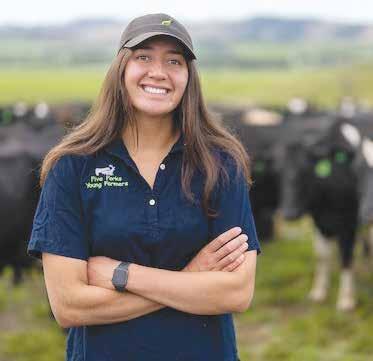
2022. The property consists of 170ha of flat-rolling country, which is fully irrigated, with great infrastructure, equipment, farm management systems, practices and protocols. She says she loves the farm and farm life which has enabled her to learn and grow.
Speakman says her goal is upskill herself and become a farm manager. In her spare time, she likes to play netball and surf.
The farm that Gardiner works on as the assistant farm manager near Ashburton is a 354ha (effective) owned by the Rylib Group in mid-Canterbury. At peak they milk 1120 cows through a newly built 80 bale rotary
shed on System 5. He says he feels very fortunate to be in his position to guide a team of three workers and provide support to the farm manager, Murray Bowden. Gardiner and his partner Ellie have three young children and he says the unwavering support of his family have motivated him to be his best. And says he wouldn’t be where he is today without them.
Gardiner was born in Whanganui and raised in a rural area. He says from an early age he decided that school wasn’t for him, and he left when he was 14.
But he says his heart was set on a farming career, which he’s now
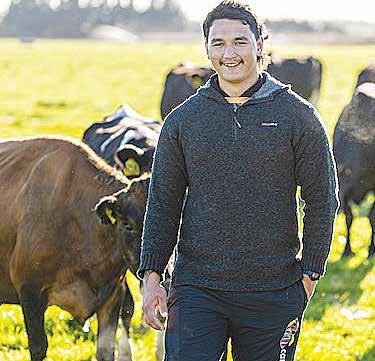
achieved, and over the last four years he has worked his way up to his current position as an assistant manager. He says his goal is to become a farm owner.
The three finalists will be attending the field days of the finalists of the main Ahuwhenua Trophy competition and the winner of both competitions will be announced in Hamilton at a gala dinner in mid-May.
Lead Judge of the competition, Matiu Julian, says every year this award attracts young farmers and growers who are invested in their futures and want to advance their careers, and as judges it is a privilege to be involved.
He says providing an opportunity for young Māori farmers to grow and connect as Māori is an investment in the future growth of the sector. What attracts many young Māori to the award is the realisation they are part of a legacy of Māori endeavour, resilience and tenacity.
“The finalists are given unique access to a broad range of experienced industry practitioners and service providers who all understand the importance of growing our young talent.
“The personal experience as an Ahuwhenua Young Māori Farmer finalist is always profound and emotionally moving,” he says.


SEALESWINSLOW
SAYS it has launched an easy-to-use digital decision-making tool that is helping dairy farmers take the guess work out of feeding their herds and use their supplements more efficiently to maximise returns.
The feed company says Ruminix³ is a science-based tool tailored to New Zealand’s pasturebased farming operations. Used by SealesWinslow at no cost to farmers, it compares the effects of feed combinations on milk production based on the variables of each farm’s unique system. Ruminix³ assesses feed options across the board, not just SealesWinslow products.
Using the tool, the company says it has demonstrated that farmers could generate up to 30% more income simply by using the right supplementary feed.
SealesWinslow gen-
eral manager Grant Jackson says while the payout is looking more buoyant, costs of production are still a challenge, which makes farmers’ feed planning increasingly complex.
“The nature of dairy farming today means farmers will always be looking for more costeffective ways to put milk in the vat and keep their cows in milk.
“They need a straightforward way to work out how to maximise milk production this season, but also safeguard the profitability of their business long term, so they can capitalise on the more buoyant forecast milk price for the 2024/25 season.”
Instead of making feed purchasing decisions solely based on price, which Jackson says is not always best, dairy farmers can use Ruminix³ to expand their options and reduce risks by predict-
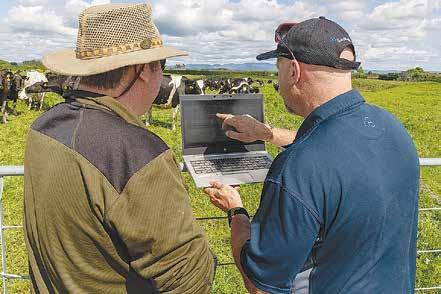
ing the effects of different feed choices before making a purchase.
“These types of tools and calculators can be complex, but that’s the last thing farmers need.”
He says the beauty of their new product is its simplicity. “It is easy to use and coupled with the guiding hands of our team will give farmers confidence the solutions they choose will give
them the best bang for their buck.”
Ruminix³ is a ration balancing software programme dedicated to animal nutrition. Using nutrition modelling based on equations from the Cornell Net Carbohydrate and Protein System (CNCPS), it demonstrates the possible return on investment from any feed simply by inputting variables
such as kilograms of dry matter (kgDM), metabolisable energy (ME) and starch content.
The CNCPS System is used by nutritionists in New Zealand and is widely accepted as an accurate predictor of milk production in pasturebased systems. An article published in the Journal of Dairy Science in 2013 by authors from DairyNZ and Cornell University
arrived at a similar conclusion as a result of a trial conducted in New Zealand.
SealesWinslow has been modelling case studies using Ruminix³.
In July 2023, a 500cow dairy farm in the South Island producing 1.76kgMS/cow/day feeding 18kgDM from pasture and 3kgDM from PKE, showed a predicted income over feed cost of $54,900/month, at a $6.75/kgMS payout.
If that same farm fed a combination of 18kgDM from pasture and 3kgDM from a high starch, high energy (13.5 MJ/kg) pelletised feed, feed costs increased by 16%. However, milk production increased by 20% and the farm’s predicted income over feed costs jumped to $72,788/month. An income increase, of more than 30% each month.

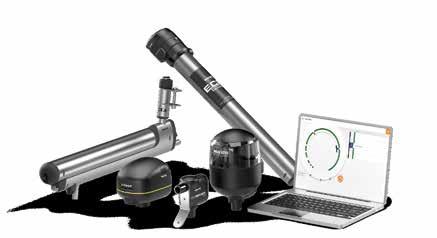


MSD ANIMAL Health New Zealand has partnered with Agrecovery in New Zealand’s first pilot to recycle SenseHub Dairy Collars (previously known as Allflex Collars) used by its dairy farmer clients.
The initial pilot project is set to recycle 10,000 cow collars that have reached the end of their battery life this year and will provide a template for recycling all types of e-waste off farms as digital, data driven farming becomes common place.
Cow collars are increasingly used by New Zealand farmers to help manage animal wellbeing, track productivity and control animals on farm. About 17 percent of the national milking herd now wear collars.
Pauline Calvert, MSD New Zealand livestock business unit lead, says waste minimisation and supporting sustainability efforts is a priority for MSD Animal Health.
He says the company has proven that by investing in better-quality feed with more energy and more starch to fire up a cow’s rumen, the more efficiently she will use their entire feed ration (including pasture) and the more milk she will produce.
Ruminix³ is available now and is being used by the SealesWinslow team via a tablet or laptop to help farmers run scenarios, weigh up their options and support them to make the best decisions. Farmers can view easy to understand reports, which can be customised based on their individual needs.
Grass will always be king. However, SealesWinslow nutrition & quality manager Paul Drew says seasonal variability in pasture means there will be times throughout an animal’s development when there are seasonal shortfalls between what nutrition they need and what pasture can provide.
Agrecovery chief executive Tony Wilson says farmers have an increasing amount of electric componentry on-farm. This can range from collars to cell phones, EID readers, sensors in their yards and milking sheds, batteries and tracking devices. Electronic waste will continue to increase as farming moves to more digital based, data driven operations.
“All these components have metal, plastic, and a circuit board inside them. What MSD Animal Health is doing with this pilot with Agrecovery is directly transferrable to all those other products,” says Wilson.
Agrecovery has developed a process which takes about five minutes to deconstruct each SenseHub Dairy collar, separating the buckle, steel weight, various plastics, and electronics.
The electronics also have their plastic covers removed for separate recycling. The componentry is then sent to the relevant recyclers where it can be recycled and used in new products.
“MSD Animal Health has been working with Agrecovery since 2006 to recycle some of its animal health products’ packaging. Recycling cow collars is a natural progression for us as an industry leader to implement solutions for on-farm electronic materials. It’s core to our business and we want to help our customers also meet their sustainability goals so that collectively we are making a difference.”
Working through Agrecovery, collars will be collected at a North Island and South Island site, with MSD Animal Health collecting the collars from their customers as they come up for renewal. The scheme also means farmers can demonstrate they can meet their milk processes environmental initiatives such as Fonterra’s Co-operative Difference scheme, which pays farmers a premium for achieving targets around milk quality, sustainability, animal welfare, and health and safety.
“Through our collaboration with Agrecovery we will know which farm the collars have come from, and how many collars they have recycled,” says Calvert. “Our dairy farmer customers can then use this information to meet their own sustainability goals and continue to make a real difference to our future.”
The Government has a compulsory stewardship programme for animal health products that comes into effect from September this year under the Waste Minimisation Act, and Agrecovery is an accredited provider; however, there is not a compulsory scheme for e-waste, yet.
SELECTING FOR disease-resistant cows has become a reality for farmers around the globe as genetic developments continue to advance.
Somatic Cell Score (SCS) has been used for over three decades to monitor, measure and breed cows with lower somatic cell scores. SCS offers an objective measure available through national milk recording systems, with the historic objective primarily being to prevent mastitis. Despite somatic scores dramatically reducing on-farm since its introduction, somatic scores reducing hasn’t significantly resulted in a reduction in the clinical cases of mastitis.
Ask any dairy farmer, anywhere, mastitis is the leading cause of udder breakdown, and cow attrition outside of fertility – that without mentioning the cost of treatment, time out of the vat and general use of penicillin.
In April 2018, the US Council on Dairy Cattle Breeding (CDCB) released genetic evaluations for resistance to six diseases, including mastitis, providing a more direct method of selection for improved udder health than using SCS alone.
The CDCB evaluation, combined with Zoetis’ independent mastitis evaluation, now creates a powerful pathway for dairy farmers wanting to breed mastitis resistant cows and reduce the actual clinical cases of the disease the see on-farm.
The development and genetic improvement of any trait relies on the collection of measurable phenotypes.
For most traits, the pipeline of data has existed for decades through milk recording, and data points such as milk production, somatic cell counts, breeding dates and calving dates to name a few.
Within the US the foundation of mastitis resistance evaluations relies on event data voluntarily recorded and reported by producers
from on-farm management software.
This information is then standardised at Dairy Records Processing Centres (DRPCs), to create a centralised system of capturing health data at a national level.
Among the health traits evaluated by CDCB, mastitis has the highest incidence rate on farms, and the mastitis-resistance predicted transmitting ability (PTA) has the highest heritability. This means relative to the other diseases, mastitis resistance is well-suited to improvement through genetic selection.
First introduced for Holsteins, the mastitis resistance trait is expressed as percentage points of resistance to mastitis above or below the breed average.
If comparing the PTAs of two sires, the difference between their PTAs shows the difference in mastitis incidence in their daughters. Because the trait is expressed as resistance, larger values are more desirable, and selection of parents with higher PTAs should result in offspring that are more resistant and therefore less likely to be affected by mastitis events. In the December 2022 official CDCB evaluations, mastitis resistance evaluations were available for Holsteins, Jerseys and Brown Swiss.
Within the US strategic breeding practices, such as the utilisation of sexed semen and use of beef sires on dairy cows, have expanded over recent years and resulted in more consideration around how many replacement heifers are needed for a herd and which females they should be created from.
Coupled with shrinking national heifer inventories, most herds will react with reduced turnover rates, which means milking older cows.
This offers advantages but comes with challenges as well. A cow may not reach her peak potential for milk production until her fourth lactation,
so by shifting to an older herd, producers can maximise the milk their farm produces.
As cows get older, they also become more susceptible to culling factors, like disease or death.
To combat this, selecting for mastitis resistance and genetically resilient cows that remain healthy, productive members of the herd lactation after lactation is important now more than ever.
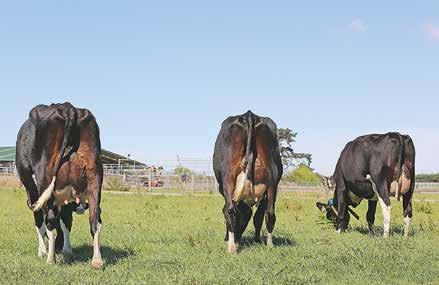
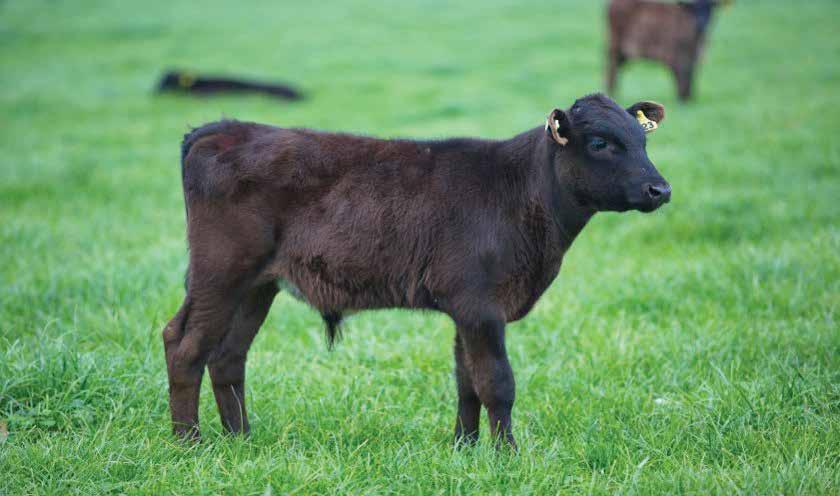
•
•
•
• Guaranteed,
•
THE NUMBERS suggest the cow families on offer at the upcoming Busybrook Holsteins sale in North Otago are as good as you’ll find anywhere.
Sharemilking at Duntroon near the Waitaki River, Nathan and Amanda Bayne have close to the most registered black and white dairy cows in the country and 144 lots for sale at their upcoming Busybrook Obsession Sale on April 10.
Busybrook Holsteins runs one of the largest dairy embryo implant programmes in New Zealand, implanting about 500 embryos annually. This allows them the opportunity to sell a large group of females every few years.
Looking ahead to the Busybrook sale, Nathan Bayne is confident this will be their best offer-
ing yet. A feature is the number of imported females from North America out of some of the hottest cow families in the world.
“We’ve put a massive amount of effort into putting this group of cattle together,” he says.
The sale will be run by PGG Wrightson in partnership with Aussie auctioneer Brian Leslie, who says it will feature some of the world’s best dairy pedigree.
“I haven’t known anyone to buy top genetics from so many countries. It’s a world-class catalogue and he’s selected the absolute top shelf.”
The Busybrook catalogue contains some of the best Breeding Worth (BW) in the country, and some of the highest yield and conformation scores. “It’s the very top bracket
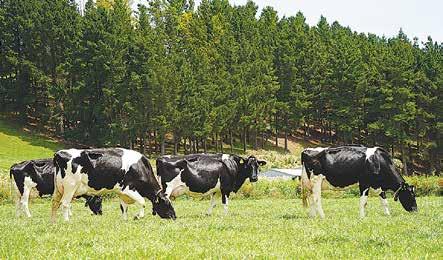
in the world.”
PGG Wrightson dairy genetics specialist Andrew Reyland has high expectations for the sale.
“The team at PGG Wrightson are excited about the opportunity it creates for farmers to buy some of the best possible dairy genetics from around the world. Nathan is well known for his attention to detail and ticks a lot of boxes. This
sale will be one of the most exciting catalogues offered by a single vendor with depth and strength of pedigree throughout the catalogue.”
Having animals being offered in both NZ and Australia through the bidr platform adds a unique aspect to the sale, Reyland says.
Nathan and Amanda’s herd is 70% bred for commercial, high index-
ing NZ genetics with a strong focus on medium sized, efficient high fertility cows with a big emphasis also on functional type.
Nathan chases production and other performance figures as hard as any breeder “but they’ve got to be on an animal that can last,” he says. “We aim to breed a commercial cow for New Zealand herds. I guess
efficiency is the word I’m looking for with those animals. There’s no point having an animal with a Breeding Worth (BW) of 700 if its udder falls off after the first lactation. They don’t need to be a show winner and they don’t need to be fancy, but they do need to hang around in the herd for as long as possible.”
Amanda and Nathan breed the remaining 30% of their herd specifically for type and production traits, with no emphasis placed on index these are mainly imported animals with deep pedigrees.
Busybrook likes to hold a sale every two to three years so they can offer up only the very best animals from their herd.
The stud has introduced flexible payment terms for this latest sale to make it easier for
people to purchase the animal at the top of their wish list. Buyers can pay off their cattle over 12 months.
Nathan and Amanda have three children, Brooke, Sophia and LillyGrace. Their Busybrook stud originates from a small farm that Nathan’s parents ran on the Taieri Plains near Dunedin airport. Nathan says he’s been interested in dairy genetics ever since he was at high school. “I wasn’t brought up in the pedigree world; it came out of an early job which sparked my interest.”
The Baynes’ are sharemilking on a mixed contour property, ranging from flat, to rolling to steep.
This is Busybrook’s third pedigree sale at Duntroon after at least two sales back on the Taieri.


Did

You’ve bred from your best; the R2’s have joined the milking herd, and you’re starting to see production results.
Now’s the time to gain some insight.
Regular herd testing provides accurate data to confirm how your animals rank within the milking herd. This valuable information feeds directly into MINDA® herd records and highlights the variation in performance and production efficiency.
From there, you can identify top producers, so you can continue to breed from your best, and detect low producers so you can make management decisions for culling or dry-off.
So, continue to add value with regular herd testing.
Talk to your Agri Manager today about regular herd testing or visit lic.co.nz/herdtesting
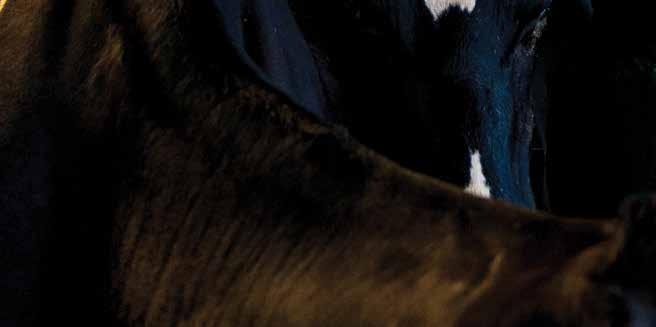
There's always room for improvement
ENSURING AUTUMN
calvers are receiving a balanced ration of macro and micro minerals will go a long way to setting them up for a successful season.
Animal health com-
pany Agvance says energy demands for cows’ peak as they transition from pregnancy to lactation.
“If your calvers are lacking in vital nutrients, vitamins, and minerals in the lead up to autumn calving, their health and performance for the rest of the season can be seriously affected. This can also affect the future health and performance of the calves.
“A successful autumn transition means the cow will come into lactation with better rumen performance, lowering the risk of metabolic disease and increasing the likelihood of a healthy calf.
“The transition and
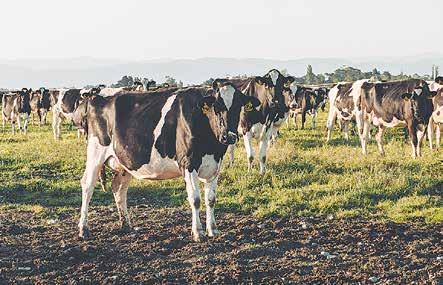
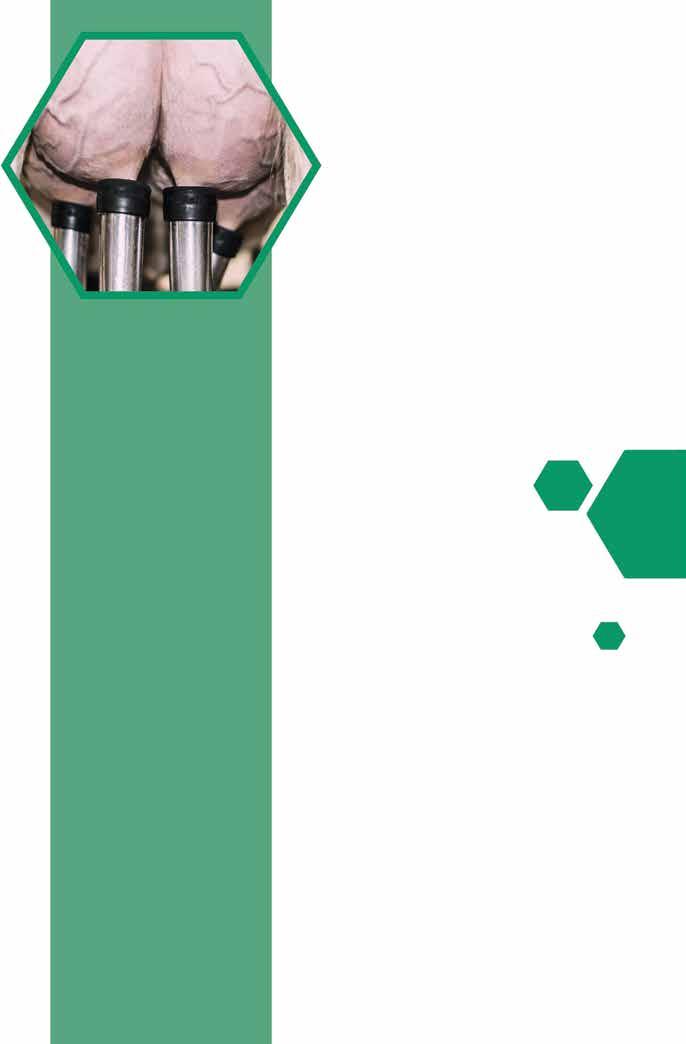
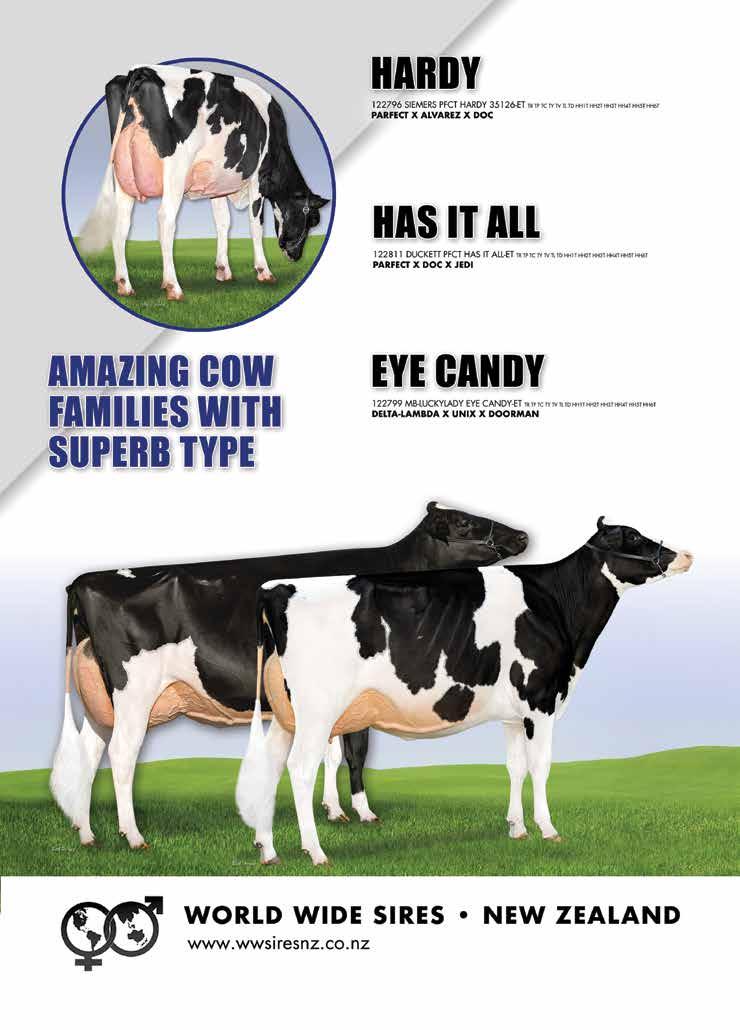
early lactation period for autumn calvers require a diet high in calcium, magnesium, and phosphorous, as well as trace elements. Rumen buffers are useful in stabilising rumen pH over this time.”
The cow’s digestive system must be transitioned to a level where she can digest as much good quality feed as possible during this time to in order to maintain condition, produce milk, and drive the hormones required over the coming months to become pregnant again.
Agvance’s range of mineral supplementation for autumn calving has been scientifically developed and proven to ensure your autumn calvers are getting the best macro and micro minerals for this critical period.
A lot of research has shown the key trace elements involved to be cobalt, copper, iron, manganese, selenium, and zinc. But how do these trace elements interact within the body to culminate in better reproductive performance?
Cobalt
Cobalt aids in the cow’s ability to make vitamin B12, which in turn improves energy balance. Studies have shown that fluctuations of B12 serum around calving time can have negative effects of subsequent reproductive performance.
Copper
Copper has been shown to not only promote regular luteal activity (the second half of the cow’s cycle), but also positively impact ovum viability and early embryogenesis (the first eight weeks post-fertilisation). It’s important to note, however, that studies show copper toxicity will decrease energy production and increase the incidence of apoptosis.
Iron Research shows iron supplementation plays a part in embryogenesis and better embryo quality, but may be ineffectual in the earlier stage of ovum development.
While iron has its benefits in supplementation, the levels must be monitored to not interfere with copper, manganese, selenium, and zinc.
Manganese
Manganese has been shown to increase pregnancy rates, enhance ovum development, and embryo viability, with positive impacts carrying on through early embryogenesis. On the flipside, manganese deficiency has been linked to increased incidence of silent heat, lower conception rates, increased abortion rates, lower birth weights, and a higher rate of male calves.
Selenium
Selenium has been shown to have positive impacts on follicle activity and protecting against cell damage as the ovum develops.
Zinc
Research shows higher levels of zinc are linked with regular luteal activity, higher pregnancy rates, higher levels of zinc have a positive impact on regular luteal activity, improved pregnancy rates, better embryo quality, and reduced time between calving and first estrus. Agvance says ensuring that your herd is receiving high-quality mineral and trace element supplementation at the correct ratio is a proven way to optimise their chances of getting in-calf and staying in-calf.
“Liver biopsies will give you an accurate assessment of your animals’ mineral stores, which your vet can perform. They’ll also be able to help you determine the right mineral supplementation programme.”
to PTO-driven KE rotary harrows and KG cultivators, or the non-powered CombiDisc.
THIS YEAR marks the 75th anniversary of the first Amazone seed drill –the 2m wide horse-drawn D1 launched in 1949.
Over the ensuing years, milestones have included the launch of the first seed drill combination, the RE reciprocating harrow carrying the D4 drill, in 1967. Indeed, this concept was so successful the company continues to produce thousands of drills each year that are mounted
In 1970 the company opened the Hude production facility in Oldenburg, Germany as a dedicated factory for drill and harrow production, employing experienced metalworkers who had been laid off in the collapse of the ship building industry in Northern Germany. The Hude facility continues to produce drill and harrow components, although assembly has moved to the nearby to the 18-line facility at Altmoorhausen.
KGM NEW Zealand, is part of the London headquartered Inchcape Group, who increased its NZ presence in August 2023 with the acquisition of SsangYong distribution and five retail outlets.
Meanwhile, KG Global took a majority shareholding in SsangYong in 2023, and with it, a production site in the Gangnan region of Korean capital Seoul with a capacity to build 240,000 vehicles per annum.
The new local distributor also oversees the Subaru and LDV brands.
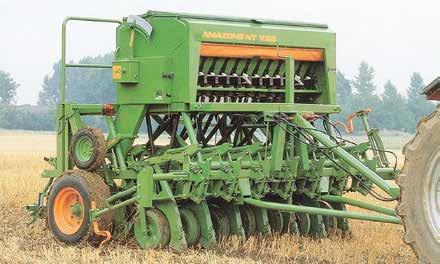
Further highlights from the 1970s include the first commercially
produced drill to offer a tramline system, the D7, while in the same era the EV Garant opened the
door to 9m solo seeding and a 3m transport width, alongside the arrival of the NoTill drill as direct

They have recently released details of the all-new KGM Torres medium sized SUV, in three variants, the Torres, Torres 4WD and the Torres EVX (battery electric model). Said to
be the first model to reflect KG Mobility’s new global design language and philosophy ‘Powered by Toughness’, Torres is powered by a 1.5 G-Di turbocharged engine mated with a third
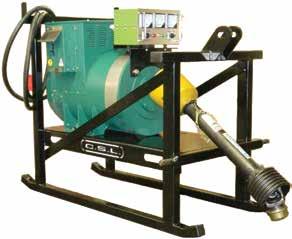
drilling became increasingly popular.
Eventually, the NT was replaced by the Primera which retained the same chisel opener principle but incorporated hydraulic folding and pneumatic seed conveyance.
Introduced in the 1990s, Airstar pneumatic seeders used a centralised metering system alongside a distribution head, feeding individual coulters via an air flow from the on-board fan. This offered the ability to completely empty the hopper, making it ideal
generation Aisin 6-speed automatic transmission.
The vehicle marks a departure from the previous owner’s traditional design with the introduction of a sleek and modern exterior. KGM New Zealand general manager Kym Mellows says “the SUV market is continually expanding and subdividing, and with Torres, we are filling the gap between medium-sized SUVs such as Korando and large SUVs like Rexton”.
Head of brand marketing for KGM New Zealand Daile Stephens says, “KGM is a modern mobility brand that sets us on the path towards advanced electrification, autonomous driving, and greater mobility for all”.
for OSR and other small seeds where keeping a box drill covered over the full seeding width often resulted in large residues.
The introduction of pneumatic distribution systems also led to wider trailed drill working widths, such as on the Airstar Xact, and as farms continued to increase in area and min-till systems became popular, the larger tank capacity of the trailed Cirrus cultivator drill helped increase daily outputs.
The 250,000th seed drill left the factory in November 2019.
The Torres 1.5-litre direct injection turbo engine delivers 120kW and 280Nm, while the pure-electric KGM Torres EVX is powered by a 73.4kWh, BYD-sourced Blade Technology battery and uses a single electric motor that produces 201bhp and 339Nm of torque to drive the front wheels. When range tested by the WLTP four-phase test rate, a single charge can deliver a combined pure electric range of 462km, a maximum towing capacity of 1500kg and V2L (vehicleto-load) charging capabilities, so its battery pack can be used to power appliances when you’re outdoors. Batteries are warranted for 1 million km or 10 years.
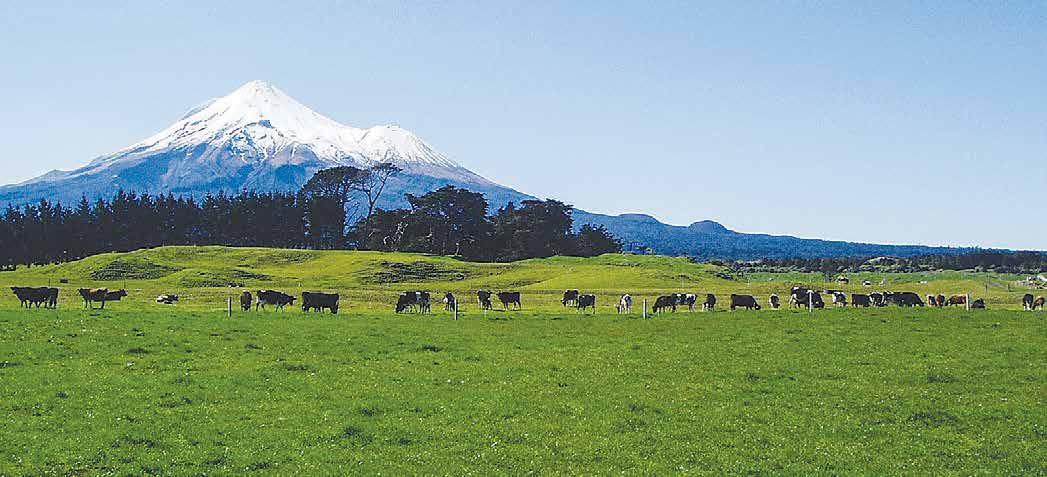



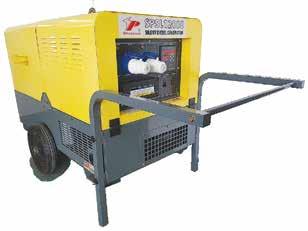

Lepto

